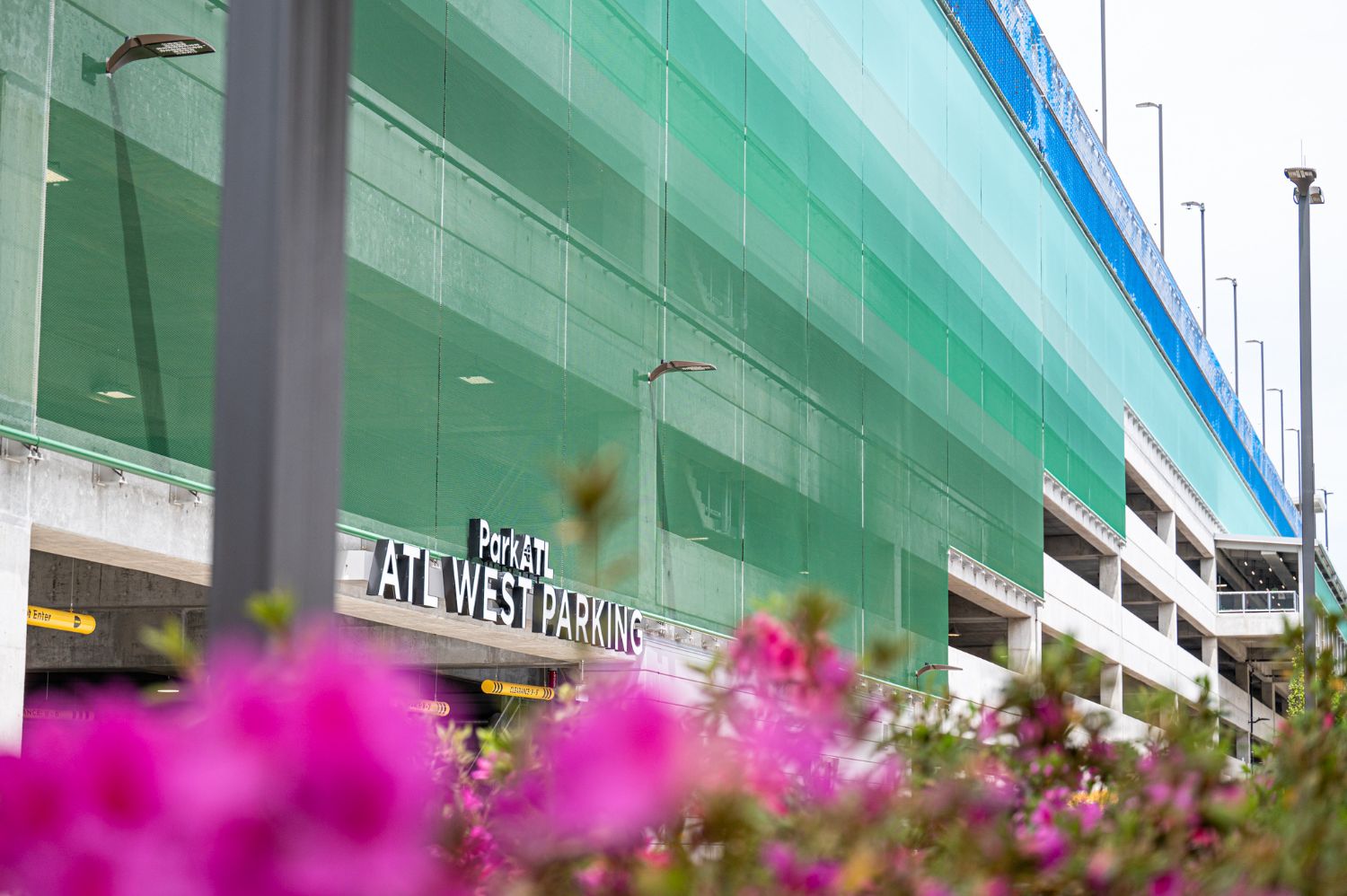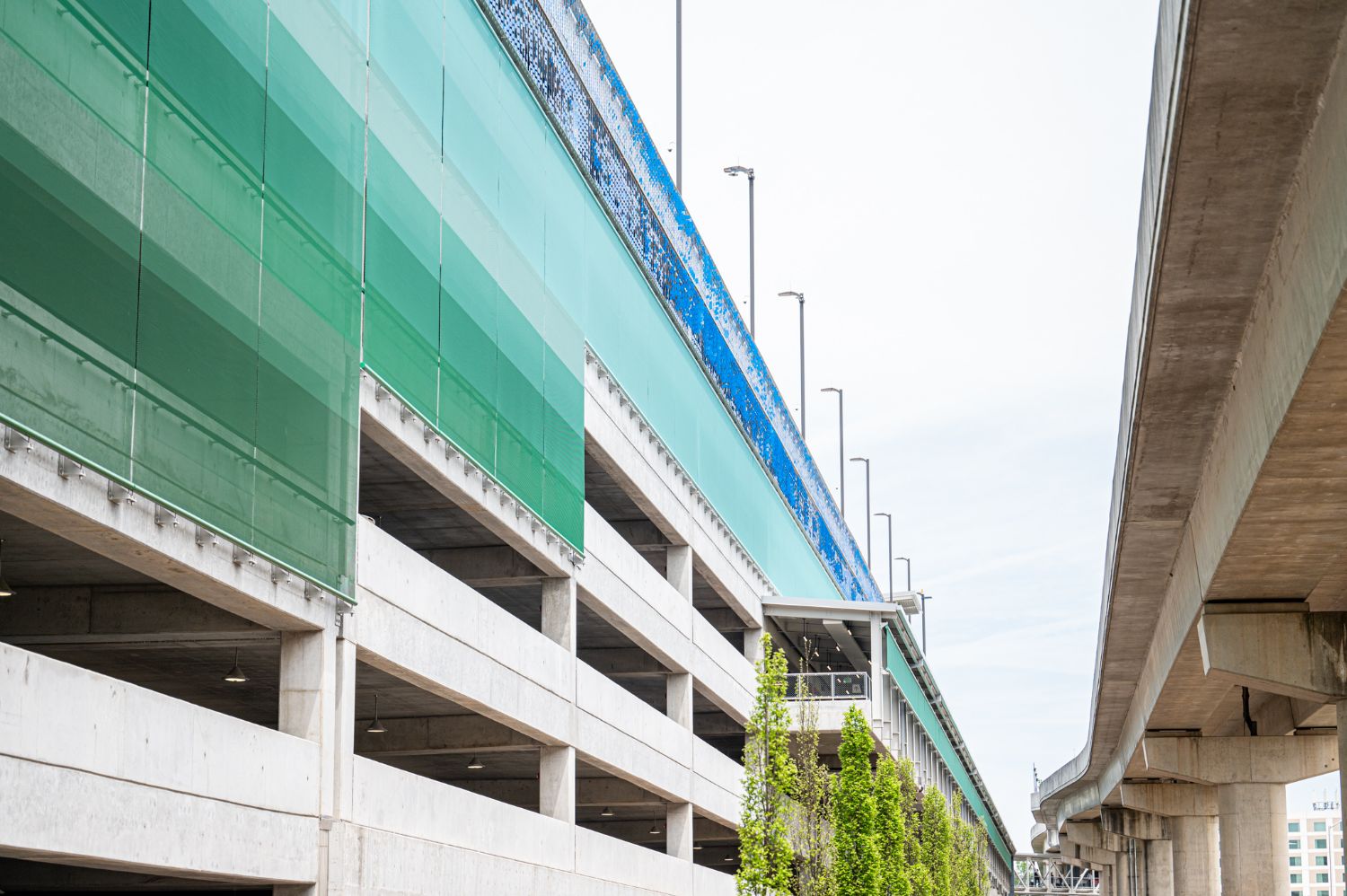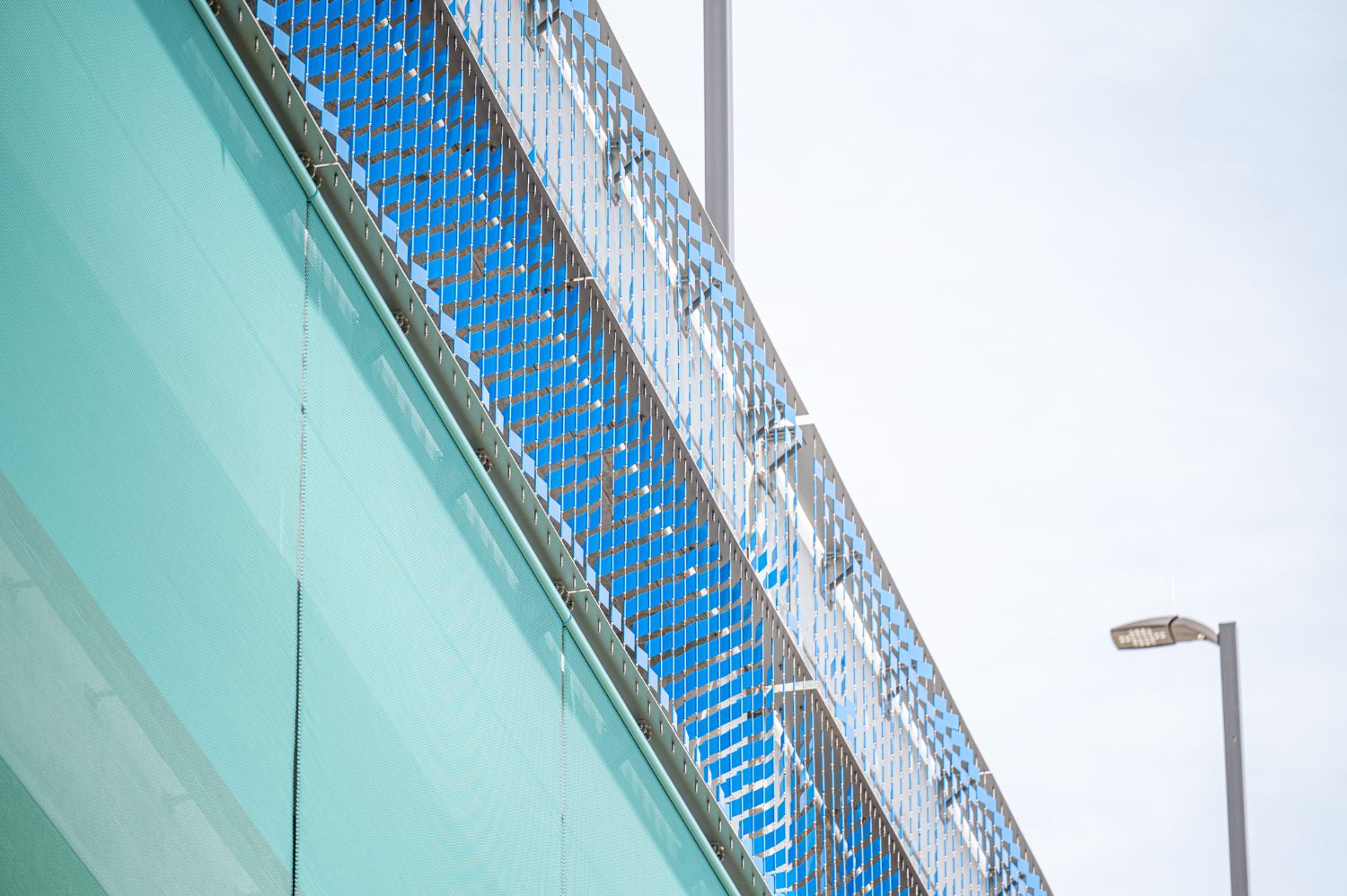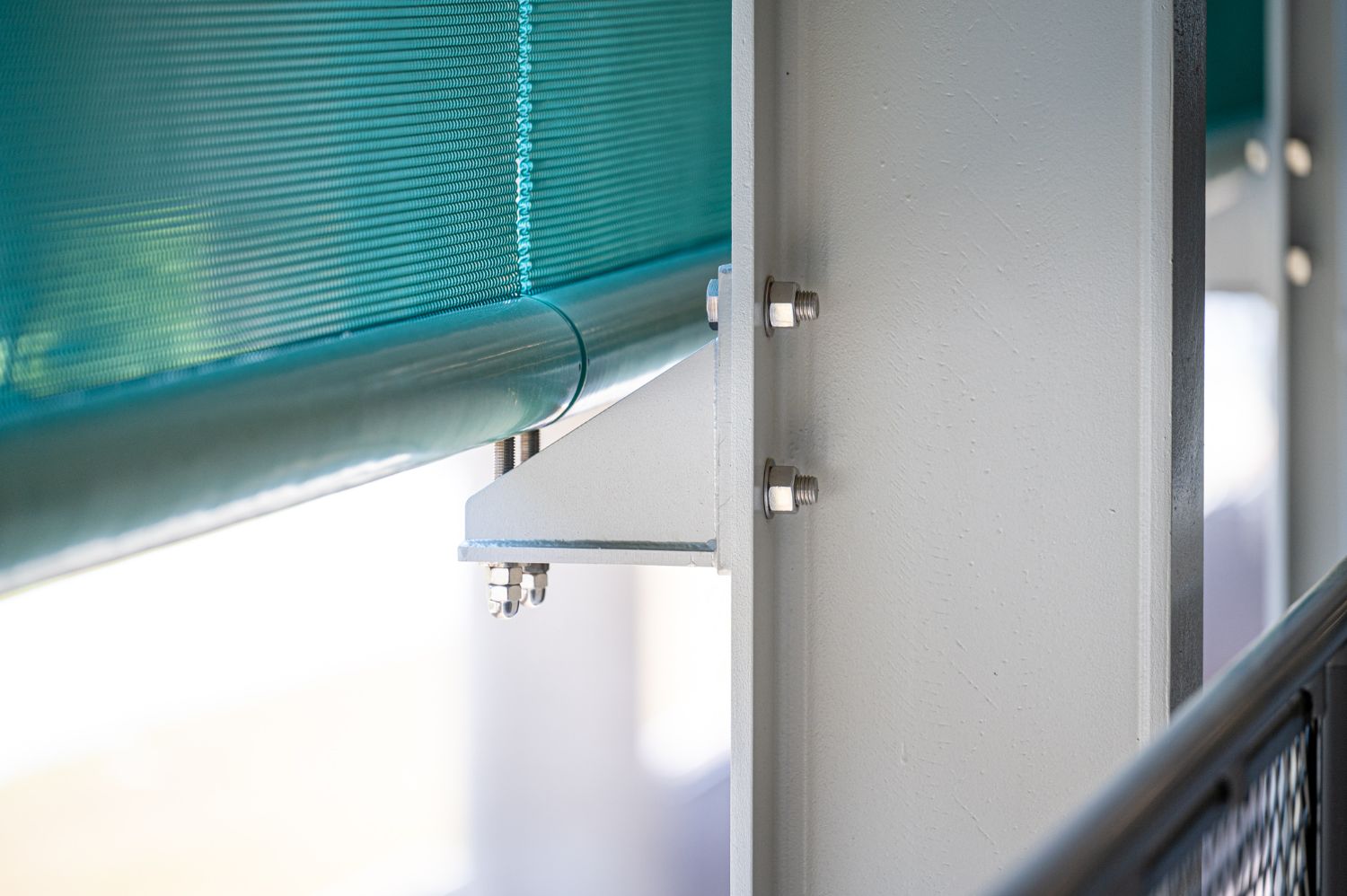Atlanta Airport West Deck Parking Garage, Horizontal Scrims Cascade Architectural Fabricoil®
Stainless Steel and 3/8”-14 Ga. Stainless Steel Metal Mesh Powder Coated an Array of Green, Turquoise, and Blue w/Pipeline Mounting System and Custom Structural Brackets
Location: Atlanta, Georgia
Architect: Fitzgerald Collaborative Group
Construction Manager: Holder-Austin-Moody-Bryson, A Joint Venture (HAMB)
The Project:
Hartsfield-Jackson International Airport in Atlanta, Georgia (ATL) is one of the busiest airports in the world based on passenger count. That includes a lot of people who begin or end their domestic and international travels there and need access to parking. Recognizing the need to accommodate their current and future parking requirements, the airport has embarked on a $181.5 million project to build a new parking deck. The ATL West parking deck is being built with an elevated walkway connecting to the adjacent Georgia International Convention Center and SkyTrain automated people-mover station. The completed project will serve as additional parking when other, smaller, parking areas are removed by providing a new, seven-level parking deck accommodating 5,200 to 6,000 vehicles. Over the long term, the West parking deck will help serve the projected growth at Hartsfield-Jackson International Airport.
The Challenge:
Parking decks commonly require an open façade to allow for ventilation but also have a corresponding need for enclosure. The ventilation aspect needs to allow for the free flow of air to disperse automobile exhaust fumes. The enclosure design needs to provide some basic protection from the elements and to offer safety for occupants against falls. In addition, the sheer size of the West parking deck posed an aesthetic design consideration – how to make the building appealing and attractive across large facades.
The Performance Solution:
The design team reviewed a variety of materials but ultimately determined that a coiled wire fabric system could meet the multiple needs of the project in an elegant and economical manner. Functionally, coiled wire fabric provides natural ventilation so that air can flow freely throughout, and car fumes are not trapped within the structure. It also protects against flying wind-borne debris and the Atlanta sun, effectively tempering the elements to make the parking areas more comfortable for people and more protected for cars. As an added safety precaution, panels of tensioned coiled wire fabric help secure the structure’s perimeter. This not only provides a durable protection against any unwanted intrusion, it also provides fall protection for anyone walking or parked near the outer edge of the garage. That prevents both accidental and intentional falls alike.
The Appearance Solution:
While all of the performance traits were important, the appearance was a big part of the design. The design team and Cascade worked together to create a custom, multi-colored exterior using different selections of Fabricoil® coiled wire fabric that was installed in a scrim system for the façades. The coiled wire fabric scrims are held in place using metal frames that attach to the building structure and display different colors in a controlled, secure manner. This provides an appealing, flowing, and deceptively lightweight look to the exterior of the building with the appearance of a fabric covering but with the durability of metal. Cascade designed the full attachment systems including structural steel for the façade.
The Artistic Solution:
In addition to the design of the coiled wire fabric, the City of Atlanta has a public art ordinance designating 1 percent of construction funds for art. Hence, with a budget of up to $1.8 million, the search for an appropriate artist led to a review panel selecting Ned Khan, a renowned international artist. Kahn, based in Sebastopol, California, is a winner of a 2003 MacArthur Foundation genius grant whose work is inspired by "fluid motion" and science. Among other relevant buildings, he was commissioned for the facade of a Charlotte, N.C. parking garage. In that installation, small panels that move in the wind (looking like waves of wind on the wall of the building) provide a kinetic form of art that transforms an otherwise dull façade.
For the ATL West parking deck, Kahn has proposed a similar, colorful, kinetic art installation. Running along the top of the facades, a colorful, multi-textured installation provides visual interest and appeal. In order to hold this installation in place, Cascade was enlisted to fully engineer and supply the mounting system to accommodate cables for the art installation. This includes the brackets and plates for the Ned Khan cable assemblies.
In the artist’s own words: “The confluence of science and art has fascinated me throughout my career. For the last twenty years, I have developed a body of work inspired by atmospheric physics, geology, astronomy and fluid motion. I strive to create artworks that enable viewers to observe and interact with natural processes. Many of these works can be seen as “observatories” in that they frame and enhance our perception of natural phenomena. I am intrigued with the way patterns can emerge when things flow. These patterns are not static objects, they are patterns of behavior – recurring themes in nature.” These outcomes would not be possible without the proper engineering and attachment cables to hold the artwork permanently in place as developed jointly by the design team, the artist and Cascade.
The Results:
The combination of the Fabricoil








